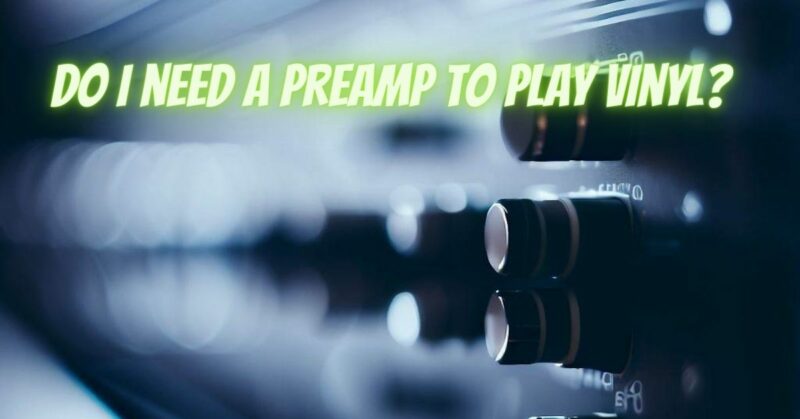The resurgence of vinyl records has brought the joy of analog music back into the lives of audiophiles and music enthusiasts. The tactile experience of handling vinyl and the warm, rich sound it offers are hard to replicate with digital formats. Yet, to unlock the full potential of your vinyl collection, you need more than just a turntable and speakers; you need a preamp. In this comprehensive article, we will delve into the importance of a preamp for vinyl playback, explaining why it’s a crucial component in your audio setup.
Understanding the Role of a Preamp
A preamplifier, often referred to as a “preamp,” is a vital link in the audio chain between your turntable and your amplifier or receiver. Its primary function is to amplify the low-level audio signal generated by the turntable’s cartridge and prepare it for further amplification and processing by your main amplifier.
Why Is a Preamp Necessary for Vinyl Playback?
Several compelling reasons underscore the necessity of a preamp for vinyl playback:
- Phono Equalization (RIAA Curve): Vinyl records are unique in that the audio signal is physically etched into grooves on the surface. During the recording process, certain frequency ranges are attenuated and boosted to fit within these grooves. This process is known as the RIAA curve. A preamp incorporates the RIAA equalization, restoring the audio signal to its original frequency response. Without this correction, vinyl records would sound unbalanced and muddy.
- Signal Boost: The output signal from a turntable’s cartridge is typically very weak. A preamp boosts this signal to a level suitable for further amplification by your main amplifier or receiver. Without a preamp, the sound from your turntable would be barely audible.
- Noise Reduction: Preamps often incorporate a low-noise design, minimizing interference and ensuring that the amplified signal is as clean and noise-free as possible. This results in a quieter, more enjoyable listening experience.
- Compatibility: Some amplifiers or receivers lack a dedicated phono input, which is essential for connecting a turntable directly. In such cases, a standalone preamp is necessary to bridge the gap and allow your turntable to be integrated into your audio setup.
Types of Preamps for Vinyl Playback
There are two primary types of preamps for vinyl playback:
- Standalone Phono Preamp: This is a separate preamp unit that you connect between your turntable and amplifier or receiver. Standalone preamps offer flexibility and can be upgraded or replaced independently of your other components.
- Built-In Phono Preamp: Some turntables come with a built-in phono preamp. While convenient, the quality of these built-in preamps can vary. In some cases, they may not provide the same level of performance as a dedicated standalone preamp.
A preamp is not merely an accessory but an essential component in a vinyl playback setup. It ensures that your vinyl records are reproduced faithfully, with the correct tonal balance and minimal interference. Whether you’re an avid vinyl collector or a casual listener, investing in a quality preamp will significantly enhance your vinyl listening experience, allowing you to revel in the warm, analog charm that vinyl records offer. So, don’t overlook the importance of a preamp—unleash the hidden power of your turntable and elevate your audio journey to new heights.


